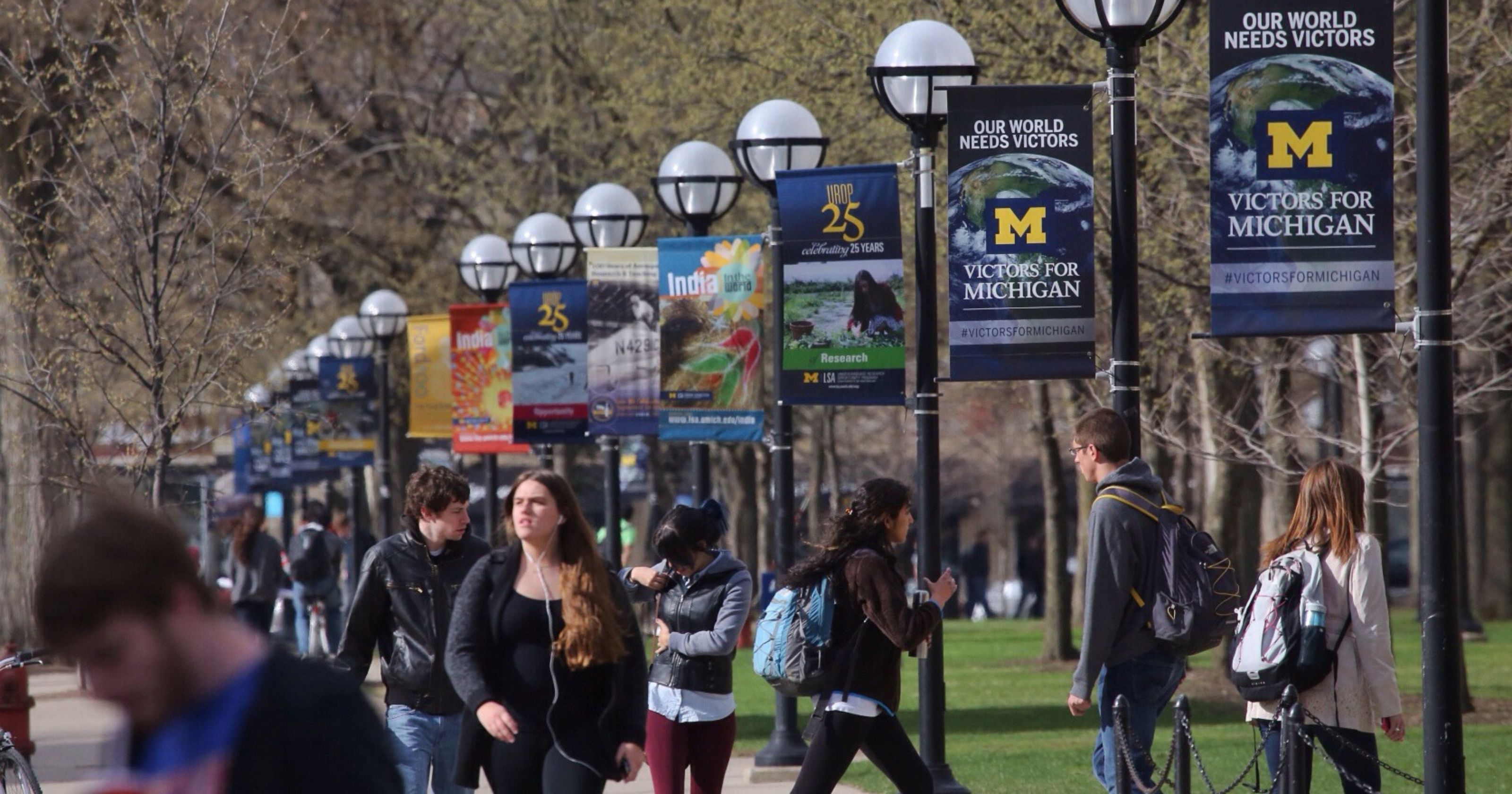
Last Thursday, President Mark Schlissel alongside several members of the Board of Regents announced the “Go Blue Guarantee”, promising well-needed financial support for some of Michigan’s lower income families. The guarantee ensures that in-state students whose family incomes fall at or below $65,000 per year receive a full-tuition scholarship for the entirety of their time in Ann Arbor — no exceptions. The deal even applies to current University students, and will come into effect in January 2018.
The guarantee has been met with near-unanimous approval from students across campus. Central Student Government tweeted their support, claiming the University’s financial support truly makes them “the leaders and best”.
“This new plan is a step in the right direction”, said Josh Hasler, a LSA senior who recently sat on a bicentennial panel discussing the possible renaming of the C.C. Little building. “But the real test of the University’s commitment to helping lower income students will be if this new policy results in increased enrollment for those students.”
Amongst the cheering, the guarantee even found a number of critics. Dr. Sara Raab of Temple University described the announcement as “cheap advertising”, arguing it does little to alleviate the financial burden of college for the vast majority of Michigan students.
At face value, the “Go Blue Guarantee” appears as an outward gesture of generosity from the University toward the plethora of students who struggle with the financial burdens of a college education every day. However, we at the Review were puzzled: wasn’t Michigan already offering this as part of their previous financial aid packages?
To confirm our suspicions, we reached out to the University Admissions Call Center and asked about the Guarantee — specifically, how the University was able to afford such a policy. The representative explained the “guarantee” was no more than a restructuring of financial aid packages, making it easier for students and parents to understand the viability of paying for college. In sum, nothing changed; the University simply chose to guarantee financial aid packages for low-income households — packages they likely would have received even before the guarantee came about.
This revelation becomes apparent after examining the Family Profiles section of the University’s Financial Aid department. The examples aid packages provided remained virtually unaltered after the deal came into effect, implying the University was already assisting families earning under $65,000. Even further, the University already offered a similar scholarship for low-income families, the HAIL scholarship, achieving roughly the same goals for the same target families as the guarantee.
However, the guarantee itself garners some merit. Even if students were likely to receive aid from the University, they were never assured they would receive anything. With the Go Blue Guarantee, families can now act upon codified, reliable information regarding the cost of attending Michigan, helping them to evaluate their own financial situations and, hopefully, find that they can afford an education here. While simply guaranteeing previously-established precedent appears worthless on the surface, it can mean the world for struggling families. Ask any economist: consumers prefer certainty over all else.
So what does this all mean? In short, not much. Prospective families won’t see much improvement to their financial aid packages, albeit the predictability of their cost of attendance is certainly a great perk. Furthermore, the guarantee only applies to tuition coverage for in-state families, meaning a conservative 50% of students remain unimpacted by the deal, more if you include the large percentage of students earning more than the $65k threshold. Worst of all, the announcement comes in the wake of 2.9 and 4.5 percent increases in tuition costs for in-state and out-of-state students, respectively.
Does the Go Blue Guarantee really signal the University’s commitment to an affordable college education? Not quite. Does it really help struggling students and families any more than they were already being helped? Not at all. Does it look great for the University and contribute to positive PR? You bet.
